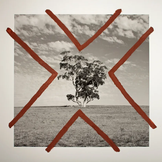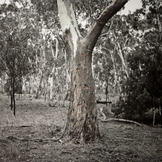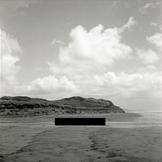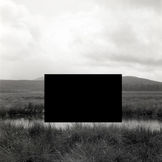
JAMES TYLOR
b. 1986, Mildura
Lives and works in Adelaide, South Australia
James Tylor (Possum) was born in Mildura, Victoria. He spent his childhood in Menindee in far west New South Wales, and then moved to Kununurra and Derby in the Kimberley region of Western Australia in his adolescent years. From 2003 to 2008, James trained and worked as a carpenter in Australia and Denmark. In 2011 he completed a bachelor of Visual Arts (Photography) at the South Australian School of Art in Adelaide and in 2012 he completed Honours in Fine Arts (Photography) at the Tasmanian School of Art in Hobart. He returned to Adelaide in 2013 and completed a Masters in Visual Art (Photography) at the South Australian School of Art. James currently lives and works in Adelaide.
James’ artistic practice examines concepts around cultural identity in Australian contemporary society and social history. He explores Australian cultural representations through his multi-cultural heritage, which comprises Nunga (Kaurna), Māori (Te Arawa) and European (English, Scottish, Irish, Dutch, Iberian and Norwegian) Australian ancestry. James’ work focuses largely on the 19th century history of Australia and its continual effect on present day issues surrounding cultural identity in Australia.
James’ artistic practice specialises in experimental and historical photographic processes. He uses a hybrid of analogue and digital photographic techniques to create contemporary artworks that reference Australian society and history. The processes he employs are the physical manipulation of digital photographic printing, such as the manual hand-colouring of digital prints or the application of physical interventions to the surfaces of digital prints. James also uses the historical 19th century photographic process of the Becquerel Daguerreotype with the aid of modern technology to create new and contemporary Daguerreotypes. Photography was historically used to document Aboriginal culture and the European colonisation of Australia. James is interested in these unique photographic processes to re-contextualise the representation of Australian society and history.
*Works from series Fire Country and Warpulyainthi are collaborations between James Tylor and Rebecca Selleck*
TURRANGKA...
IN THE SHADOWS
UNSW GALLERIES
/ 2023
Multi-disciplinary artist James Tylor combines historical and contemporary photographic processes to explore his Nunga (Kaurna Miyurna), Māori (Te Arawa) and European (English, Scottish, Irish, Dutch and Norwegian) ancestry.
‘Turrangka...in the shadows’ unites a decade of Tylor’s practice and, for the first time, brings together the most comprehensive selection of his unique daguerreotypes, expansive digital photographic series, hand-made Kaurna cultural objects, and furniture. The exhibition title is drawn from a Kaurna word, highlighting a significant ongoing aspect of Tylor’s practice: the learning and sharing of his Indigenous language. As well as shadow, turra also translates to reflection, image, and mirror.
At the core of Tylor’s practice is a continuously innovative programme of photographic intervention, disrupting the image to redact or highlight visual information. He systematically alters the reading of Country by excising information from the photographic print or inscribing language and place-names onto the surface of his daguerreotypes.
These photographs provide a glimpse into Tylor’s broader practice of recreating Kaurna cultural artefacts, architecture, and ephemera. Antiquated analogue photographic processes including Becquerel daguerreotypes and hand-tinting are also used to generate a new archive of pseudo-historical images. Tylor’s recreations point to the absence of these images from the hegemonic depiction of colonial Australia’s visual history.
These strategies are at the service of exploring the suppression and erasure of Aboriginal cultural history from the Australian landscape through the ongoing legacy of colonialism. Tylor considers his actions of learning Kaurna language and reviving culture on Country as a means of repatriation. ‘Turrangka...in the shadows’ looks at the complex interplay of techniques and the incisive observations on Australia’s fraught history that characterise Tylor’s prolific and profound artistic practice.
Curated by Leigh Robb
*Works from series Fire Country and Warpulyainthi (pictured) are collaborations between James Tylor and Rebecca Selleck*
TURALAYINTHI
YARTA SERIES / 2017
This series explores my connection with Kaurna yarta* (Kaurna land) through learning, researching, documenting and traveling on country. Turalayinthi Yarta is a Kaurna phrase "to see yourself in the landscape” or “landscape photography”. In a two year period I travelled over 300 km of the southern part of the Hans Heysen trail that runs parallel along the Kaurna nation boundary line in the Mount Lofty ranges. Combining photographs and traditional Nunga**designs to represent my connection with this Kaurna region of South Australia.
The Heysen trail runs through the Mount Lofty and Flinders ranges from Cape Jervis in the south to Wilpena pound in the north. The Heysen trail named after the renown German Australian colonial landscape painter Sir Hans Heysen. The 1200km long trail passes over many different Nunga nations such as Ramindjeri, Ngarrindjeri, Kaurna, Peramangk, Ngadjuri, Adnyamathanha, and Nukunu lands. I have attempted to acknowledge these Nunga nations throughout this series with traditional language and design.
The photographs of the landscape document different regions, and environments of Kaurna and the surrounding Nunga region. Painting over the European medium of photography with ochre, pipeclay and charcoal with Nunga designs to represent Nunga people’s intellectual, spiritual and physical connection with yerta (Country). The ochre and charcoal on the photographs is a physical presentation of the landscape on the photographs.
My Nunga Kaurna family has been in the region of South Australia for 65,000- 80,000 years and has a rich cultural connection to this land. It is a great honour for me as a Kaurna person to learn, practice and walk in my ancestors footsteps. This series acknowledges and pays respect to Nunga people and their rich cultural, spiritual and physical connection to this landscape of South Australia.
ACT LIKE A MAN / 2017
Act Like a Man is an exhibition of new daguerreotypes by James Tylor examining traditional masculinity in contemporary Australia. His practice examines concepts around cultural identity in Australian contemporary society and social history. Tylor’s multi-cultural heritage – Aboriginal, Maori and European – is a focus of his artwork, which recognises the profound impact of colonisation and migration.
“In mainstream society, there are many stereotypes of male masculinity that determine how men are meant to behave. A man in Australia is expected to be strong physically, curb emotions, have children, a job, drive a car, own a house and behave in a certain way. These pressures can be enormous and without support and guidance it is easy to understand how things can go awry.”
THESE ARE OUR OBJECTS / 2015
This series of daguerreotypes highlights illegal drug use and drug addiction within Australia. The use of drugs is now relatively common and affects all levels of Australian society both directly and indirectly. Drug use and addiction doesn't discriminate based on race, gender, wealth or class. While drugs themselves may not discriminate against members of our society, sadly our society does discriminate against those within our community who become drug addicts. Drug users can feel alienated from their community, particularly as this contentious topic results in a reluctance to seriously discuss the use of illegal substances. This has lead to a lack of support for people who want or need help to recover from drug abuse.
It is important to talk about the use of illegal drugs in Australia. To encourage people in our community to seek help before their addiction results in harm to themselves or others. As someone who has had problems with drug addiction in the past, I am aware of the issues that can ensue.
These are our objects seeks to create a dialogue around this subject. I have attempted to begin a conversation by photographing homemade drug paraphernalia created from everyday objects and used during the years I was addicted to marijuana and amphetamines. I hope by sharing my story it will help to break down the stigma associated with drug use and create a greater awareness of the hazardous nature of its accessibility.
UN-RESETTLING SERIES
/ 2013 - 2014
The Un-resettling series is a self-experimental exploration project of re-learning and practicing traditional Indigenous cultural practices in contemporary society that have been lost due to European colonisation of Australia. European colonisation has had a massive impact on Indigenous cultural practices since 1788. This hand-coloured photographic series attempts to re-explore and restore these lost traditions.
Historically the loss of traditional practices occurred due to the Westernisation of Indigenous people and culture by the British and Australian governments. Cultural loss first begun when the Indigenous people were removed from their traditional lands and were segregated to Christian missions and government reserves where traditional indigenous cultural practices were forbidden. The Australian government’s assimilation policies from 1901-1967, including the Stolen Generation, was a major contributing factor in the loss of knowledge and traditional practices.
Since the 1967 referendum that included Aboriginal people as Australian citizens, Indigenous people from communities across Australia have been actively working to continue or regain lost knowledge and restore traditional practices. In some cases individual and communities have to overcome challenges imposed by Australian Government policies and laws that hinder access to land and the ability to freely practice traditional culture in contemporary society.
As a young Australian with Indigenous ancestry I feel that it is extremely important to learn, understand, practice and teach indigenous culture. In this self-experimental exploration project, I have attempted to re-learnt some traditional practices from oral discussions, language, drawings, paintings, photographs, historical journals and publications. Re-learning these practices has given me a deeper understanding of Australian history, the environment and my ancestors’ cultural practices but most importantly a great understanding of my own Indigenous identity.
FROM AN UNTOUCHED LANDSCAPE / 2011
This series highlights the contemporary absence of Aboriginal culture within the Australian landscape and how this phenomenon is a direct result of the impact of European colonisation.
The first European colonists forced the local Aboriginal people off their traditional lands and into small Christian missions and government reserves. This allowed the new European arrivals free access to clear the land for settlements, forestry and agriculture. This clearing of Aboriginal people from the landscape resulted in the removal of Indigenous cultural artifacts and identity from the Australian landscape.
Today the absence of Aboriginal culture within the Australian landscape is censored by this process of colonisation and has left much of the Australian landscape with the appearance that it was ‘Untouched’ before European arrival.



































































































